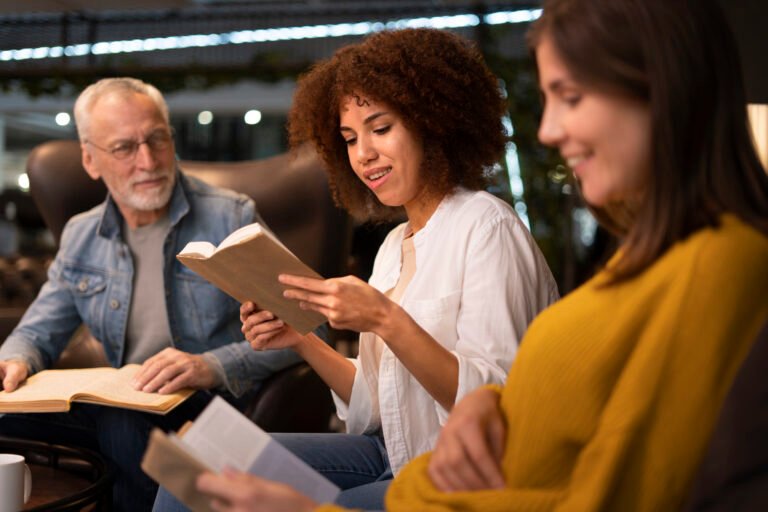Want Better Coffee at Home? Here's Everything You Need to Brew Like a Pro
Dr Karan Explores Podcast with James Hoffmann | August 7, 2025
Coffee is no longer just a morning pick-me-up. It’s a daily ritual, a sensory experience, and increasingly, a hobby embraced by millions around the world. If you’ve ever wondered why some cups of coffee taste magical while others fall flat, or if you’re toying with the idea of investing in a home setup that rivals your local café, this guide is for you.
In this post, we’ll explore the journey of coffee from bean to cup, unpack the truth behind health claims, debunk myths about instant coffee and capsules, and walk you through how to build a better coffee routine at home—without falling down a never-ending rabbit hole of gear and gadgets.

From Vice to Virtue: How Coffee Got Its Makeover
Not long ago, coffee was seen in the same category as alcohol and cigarettes—a necessary vice rather than a healthy choice. Fast forward to today, and coffee is celebrated as a superfood. Research has linked coffee to benefits in gut, metabolic, heart, and even brain health. This change in perception aligns with the rise of specialty coffee and a growing appreciation for the nuances of coffee’s chemistry.
The shift started in the late 1990s and early 2000s, when brands like Starbucks brought coffee out of the kitchen and into cafés. From 2008 onward, specialty coffee began to boom, making premium, ethically sourced, and better-tasting coffee more accessible.
Key takeaway: Coffee is no longer just a stimulant. It’s an experience—and one with growing health credentials, provided it doesn’t interfere with sleep.
What Makes Coffee Healthy?
Coffee contains more than just caffeine. It’s rich in phenolic compounds, soluble fibers, and prebiotics that support gut health. However, coffee’s benefits aren’t universal. For some, caffeine may cause anxiety or disrupt sleep, outweighing potential upsides.
Interestingly, higher-quality beans like Arabica, typically grown at higher altitudes, are shown to have more phenolic compounds and better flavor profiles. These beans also tend to be more resistant to mold and toxins that can affect lower-quality beans.
Important note: While caffeine often takes center stage, it’s only one component of coffee. And yes, Arabica usually wins over Robusta in both flavor and chemical quality.
Instant Coffee vs Specialty Coffee: What Are You Really Drinking?
If your current coffee habit involves scooping from a tin of instant, here’s a wake-up call: instant coffee is made by brewing low-grade coffee, freeze-drying it, and adding synthetic aroma under the lid. It often lacks meaningful caffeine content and contains fewer beneficial compounds.
In contrast, brewing freshly ground beans not only gives you a richer cup, it can also reduce your overall consumption because the drink is more satisfying.
Takeaway: Instant coffee is convenient but chemically inferior. If you’re serious about coffee, it’s time to move on.
The Rise of the Home Brewer
Since the pandemic, many people have begun brewing at home—some with high-end gear, others with a humble French press. The key difference lies in control and quality of the grind.
Nespresso and capsule machines provide convenience but at a cost. A single pod contains about 5g of coffee compared to 18g in a standard café espresso. That means you’re paying more for less coffee, and sacrificing flavor and complexity.
Coffee Brewing Comparison Chart
Brewing Method | Coffee Used | Taste Quality | Caffeine Level | Cost Per Cup | Skill Needed |
|---|---|---|---|---|---|
Instant Coffee | 1 tsp | ❌ Low | ❌ Low | ✅ Low | ✅ None |
Nespresso Pod | ~5g | ✅ Medium | ✅ Medium | ❌ High | ✅ Low |
French Press | 18g | ✅ High | ✅ High | ✅ Low | ✅ Medium |
Espresso Machine | 18g | ⭐⭐⭐ High | ✅ High | ❌ High | ❌ High |
Pour Over | 18g | ✅ High | ✅ High | ✅ Low | ✅ Medium |
Best value: A French press or pour-over setup with a good grinder can deliver café-quality coffee at a fraction of the cost.
Why the Grind Matters
One of the most overlooked variables in brewing coffee is the grind size. Cheap blade grinders produce uneven particles that make coffee taste both bitter and sour. In contrast, burr grinders allow precise control and consistent results.
Pro tip: Investing in a burr grinder (~$150) can instantly elevate your coffee experience, especially if paired with whole beans.
Real-Life Example: Home Brew Upgrade on a Budget
Emma, a marketing consultant from Austin, Texas, switched from instant to whole-bean coffee during lockdown. She bought a $100 burr grinder, a $20 pour-over cone, and a $15 digital scale. Within weeks, her morning coffee ritual became a meditative, enjoyable experience. Not only did she reduce her coffee intake, she also saved money by avoiding daily $5 lattes.
Lesson: You don’t need a $2,000 espresso machine. Just the right grinder and quality beans.
Understanding Coffee Beans and Roasts
When shopping for beans, look for:
- Roasted-on dates (not just best-before)
- Whole beans for freshness
- Arabica over Robusta for better taste
- Single-origin or traceable sources for ethical transparency
Dark roasts often lose more nutrients during roasting. Light roasts preserve more beneficial compounds but can be harder to extract correctly.
Roast Level and Nutrient Retention
Roast Level | Acidity | Nutrient Retention | Flavor Complexity | Ease of Brewing |
Light | ✅ High | ✅ High | ✅ High | ❌ Lower |
Medium | ✅ Medium | ✅ Medium | ✅ Medium | ✅ Medium |
Dark | ❌ Low | ❌ Low | ❌ Low | ✅ High |
Debunking Coffee Myths
Myth: Caffeine = Coffee
Truth: Caffeine is only one component. Coffee contains hundreds of compounds with potential health effects.
Myth: Fair Trade always means ethical sourcing
Truth: Fair Trade applies mostly to cooperatives and doesn’t always reflect quality or fair compensation.
Myth: Coffee damages your gut microbiome
Truth: It modifies it. Some changes are beneficial, especially for butyrate-producing bacteria.
Tips for Next-Level Home Brewing
- Buy fresh, whole beans and store them in an airtight container.
- Use a burr grinder and adjust grind size for your brew method.
- Invest in a scale to measure coffee and water precisely.
- Taste side by side. Compare two beans to learn preferences.
- Experiment with water temperature (195-205°F is ideal).
- Avoid fridge storage. Freeze beans if storing long term.
Looking Ahead: Is Coffee a Luxury of the Future?
Climate change, labor shortages, and urban migration are threatening the future of coffee production. Rising temperatures force growers to plant higher in the mountains, but land becomes scarce at higher altitudes. Diseases like leaf rust are also becoming more prevalent.
Bottom line: Good coffee will always exist—but it will become more expensive and scarce. The time to appreciate and support ethical, sustainable coffee is now.
Final Thoughts
You don’t need a $3,000 espresso machine or a TikTok-worthy setup to drink better coffee. A few smart choices—a grinder, good beans, and a mindful brewing process—can transform your coffee ritual.
Whether you’re in it for the taste, the health perks, or the quiet joy of a morning ritual, better coffee at home is within reach. So go ahead: upgrade your grind, find your favorite bean, and brew something better.
Related Post

